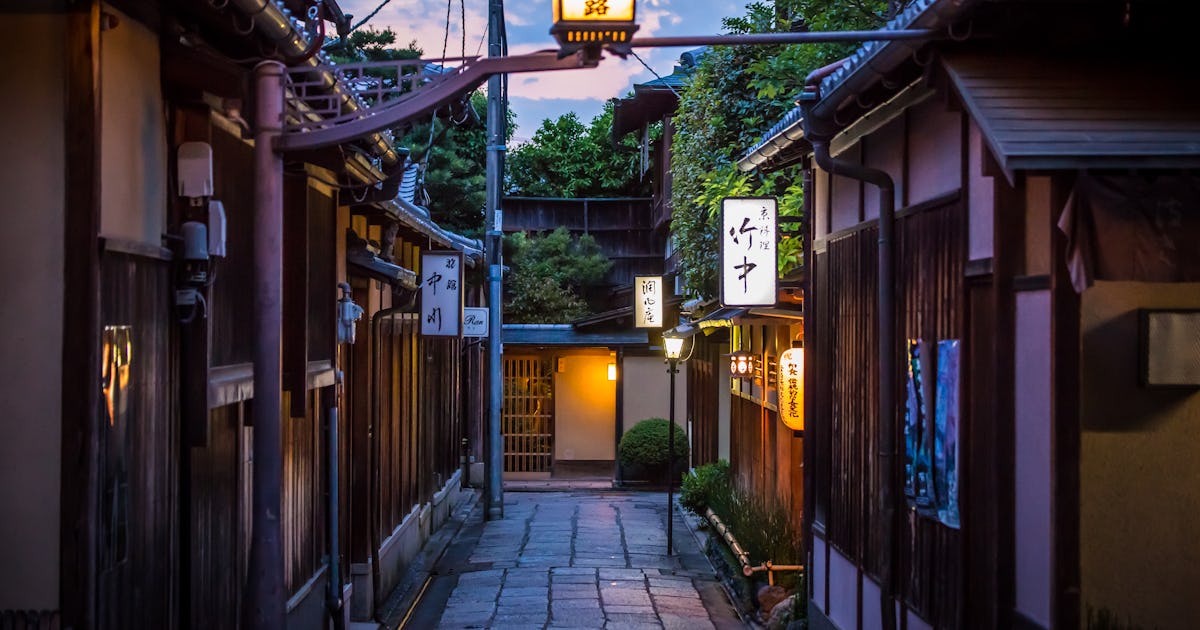
For many people, a bright bolt of tartan epitomizes Scotland, conjuring misty, heather-filled glens and bagpipers in Highland dress. But for Scots, the colorful pattern adorning kilts and bonnets (a type of cap) has a checkered past.
“We love it and we hate it in equal measure,” says Mhairi Maxwell, a curator at the V&A Dundee, the Scotland outpost of London’s Victoria & Albert Museum.
Worn by royalty and ruffians alike, tartan has evoked both the traditional and the subversive throughout its history, at times affirming Scottish identity and ridiculing it. Now a major art exhibition at the V&A Dundee, opening this April, will attempt to unravel the cloth’s history and contradictions through Chanel dresses, sculptural Donald Judd prints, and East African shuka textiles.
The timing, says Maxwell, is right. The debate that the exhibition surfaces is “very contemporary,” she says, relating to emerging topics of “independence, nationalism, and our place in the world, [as well as] decolonization and [presenting] a more global perspective on textiles.”
Tartan’s story is long and complicated, but the cloth has proved surprisingly adaptable to the changing winds of politics and fashion. From workwear to tourist souvenirs, clans to catwalks, and now a museum show, here’s how tartan has woven its way into Scottish history and where travelers can still witness its timeless appeal.
What is tartan?
Tartan is known to have been worn in Scotland since at least the third century A.D., yet its precise origins are shrouded in mystery. Unlike tweed, tartan (often called “plaid” in the United States) uses a simple “two over two” twill weave to create a bright pattern of interlocking stripes—a process that visitors can watch at mills in the Borders, Highlands, and Edinburgh.
(Here’s how tweed became a symbol of Scottish culture.)
Traditionally made from wool, the strong and hardwearing cloth was favored as practical everyday wear by Highlanders, the largely Gaelic-speaking clan societies of Scotland’s north. By the mid-18th century, the bold print became a symbol of allegiance to Charles Edward Stuart, better known as Bonnie Prince Charlie, who led an army of tartan-wearing rebels known as Jacobites into England in 1745.
It was the last in a series of Jacobite uprisings that attempted to topple Britain’s Protestant King George II from the throne and restore the Catholic House of Stuart, which had originated in Scotland.
After the Jacobites’ final defeat at Culloden in 1746, Highland dress, the traditional clothing that reflected the region’s rural environment, was banned. Among the prohibited garments were the phillabeg (little kilt), trews (tartan tights), and tartan-patterned great (trench) coats.
But one of “the greatest misunderstandings,” says Peter MacDonald, historian and head of research and collections for Scottish Tartans Authority, is that tartan was “banned per se,” rather than only some patterned items. Nevertheless, “because the Highlander was forced into Lowland dress”—the more tailored, European clothing style of the period—“his everyday link to tartan was irrevocably severed,” MacDonald wrote in an essay. The ban’s 1782 repeal changed tartan forever.
Tartan’s brand power
In 1822 King George IV attempted to demonstrate unity by appearing in full Highland dress during the crown’s first visit to Scotland since before Culloden. But the event sowed the seeds of what critics would later derisively call “tartanry,” the excessive, kitschy use to represent an overly romanticized picture of the country. The essayist Tom Nairn bitingly blamed this “tartan monster” for stifling Scottish culture.
Twenty years after King George’s wardrobe misstep, Queen Victoria took tartanry to new heights with her purchase of Balmoral Castle. Decorated in wall-to-wall tartan, her weekend retreat solidified Scotland’s transformation from a threat to a vacation destination.
(Queen Victoria took the throne amid turmoil. Here’s how she held power.)
The Highlands—cleared of many of its inhabitants following Culloden—were relegated into the “wild” and “empty” idyll of tourist brochures. Scotland became a brand marketed by tartan, mass-produced and spread across the Empire by the British army, into which Highlanders had been assimilated.
It was this commodification of tartan that 1970s youth culture subverted. Punks, including the Vivienne Westwood-styled Sex Pistols, wore tartan “as a finger up to the establishment,” says Maxwell, “very much recognizing its political power.” Tartan, she says, “is always worn to be seen and to be heard—it’s a loud pattern.”
Fashion designer Alexander McQueen went further by consciously repoliticizing the cloth. For his 1995 “Highland Rape” show, he sent models—some dressed in his Clan MacQueen tartan—staggering down a heather-strewn catwalk to demonstrate the destruction of the Highland people, culture, and land after Culloden. In McQueen’s hands, tartan rebelled against tartanry.
Tartan today
Walking along Edinburgh’s souvenir shop-lined Royal Mile, it’s clear that Scotland has not slayed the tartan monster. At the same time, businesses around the country are rethinking the complicated cloth. Just a few miles from Balmoral in the Cairngorms, the Fife Arms’ tartan carpets and wall coverings sit comfortably alongside contemporary international artwork collected by the hotel’s Swiss gallerist owners.
Like the shape-shifting beasts of Scottish folklore, tartan is always changing. Tartan is “everything all the time,” says Maxwell, “and I think it’s endured as a design and source of inspiration because it’s got this tension.” Today, tartan keeps evolving to meet new challenges, including that of fashion’s environmental impact.
Prickly Thistle describes its team as “tartan rebels” for their business approach, which aims to tackle fast fashion and center sustainability. The Highland textile mill crafts made-to-measure garments that are meant to last forever. To encourage shoppers to buy less, its core collection is on sale just four times a year. “Our evolution could be linked to the past,” says founder Clare Campbell, pointing to the sustainability of natural fibers such as wool, which are durable and require less washing.
Yet these days, you don’t have to go to Scotland to see tartan. The enduring style staple has flourished elsewhere, while remaining a symbol of Scotland. It “doesn’t just represent Scottish identity, it’s equally Japanese,” Maxwell says, pointing to both Japanese street style and runway looks. In fact, tartan is so popular in Japan, the country hosted a major museum show about it years before Scotland.
(Tokyo became a megacity by reinventing itself.)
From recent collections by Saint Laurent and Kenzo to the edgy boutiques of Harajuku, Tokyo, and an Academy Award-winning movie, tartan is ubiquitous on the catwalk, street, and screen. It’s not only a Scottish symbol: the Maple Leaf Tartan is an official national symbol of Canada, as Canadian as the national anthem, flag, and beaver.
“As much as it is about celebrating Scotland and Scottish identity, it’s really a global take on [tartan],” says Maxwell of the V&A’s exhibition, which highlights everything from French couture designers’ frequent use of tartan to tartan-patterned Indian madras fabrics. The exhibition, she says is “decentralizing the narrative of tartan. It’s now a global textile.”
What to know
Visitors can watch weavers make tartan and try it themselves at Prickly Thistle’s Highland mill. They can also learn how it’s made at Locharron Visitor Centre in Selkirk, one of Scotland’s most storied weavers.
In Edinburgh, Kinloch Anderson has been crafting tartan since 1868, while the more contemporary Araminta Campbell designed the custom tartan that adorns The Fife Arms hotel. Edinburgh’s Balmoral Hotel has a dedicated Tartan Butler who organizes day trips for guests to explore the art of tartan and arranges kilt fittings locally.
At the National Museum of Scotland, visitors can view tartan garments that range from a kilt originally made for George IV’s visit to Scotland to a suit designed by Vivienne Westwood.
link






